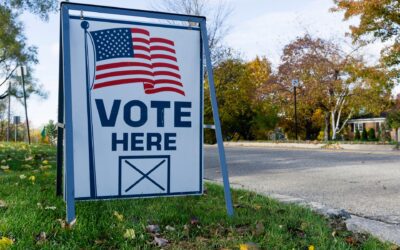A new survey by Democracy Corps in 50 of the most competitive Republican-held Congressional districts – nearly all of which gave a majority to Obama in the last presidential election – shows the new Republican majority very much in play in 2012.[1] This survey in these battleground seats shows a significant erosion of the Republican members’ vote and significant change in electoral dynamics. The votes these members are casting in support of the Tea Party agenda and House budget will come with a significant political price.
The Republican incumbents in these districts, 35 of them freshmen, remain largely unknown and appear very vulnerable in 2012.[2] These incumbents are in a weaker position than Democratic incumbents were even in late 2009, or Republican incumbents were in 2007 in comparable surveys conducted by Democracy Corps.
Reapportionment could affect some of these races, but note that we did not include some districts from California because of reapportionment uncertainty where Obama will run strong and we excluded districts in Iowa, Nebraska, and Kansas where we had good reason to believe reapportionment would remove competitive seats. While a lot can happen over the next 19 months, it is at least as likely that the partisan playing field tilts further in favor of Democrats. This poll took place right in the middle of the House Republicans’ first 100 days, and shows early signs of volatility.
Right now, the two parties are at parity in these so-called Republican seats – and strikingly, 45 percent say that they “can’t vote to reelect” the named incumbent. Just 40 percent say they will vote to reelect their incumbents. This has already produced a congressional race that is dead-even in the battleground. After winning these seats by a collective 11 points in 2010, these Republicans now lead generic Democratic challengers by just 2 points, 44 to 46 percent, and stand well below the critical 50 percent mark.
For comparison, in July 2009, after the luster of President Obama’s inauguration had already begun to fade, the Democratic incumbents in our battleground of 40 districts still held a 6-point advantage over a generic Republican challenger. Thirty six of these 40 Democrats went on to lose their seats. What is the future of these very vulnerable incumbents?
While our next memo will report the results on the budget, but it is important to note that the battles in Congress only make this worse for Republicans. Only 46 percent of likely voters in these Republican districts support the $61 billion of spending cuts and only 37 percent support their approach to the budget and spending. A plurality say that the more they hear from their incumbent Republican representatives, the less they like them. All this gets significantly worse after hearing from both sides on the budget.
While Democrats still have work to do with independents and swing voters, they have consolidated their base groups and are winning back Obama voters who defected in 2010. Most importantly, Democratic and Republican voters are equally enthusiastic about their preferences, a very big change from earlier trends. Indeed, there are more voters who are now open to the Democrats in 2012.
Key Findings
- Since November, the vote has shifted 9 points – Republicans won these battleground districts by 11 points in November, but now win by just 2 points. The shift is partially driven by the change in the electorate, but also by shifts in voter sentiments.
- Republican incumbents are largely unknown; just 55 percent of voters know enough about them to give them a non-neutral personal favorability rating.
- These Republicans are vulnerable, more so than Democratic incumbents were in 2009 or Republican incumbents were in 2007. In even smaller battlegrounds, incumbents held 6 point advantages in both cases. A 45-to-40 percent plurality of voters say that they can’t vote to re-elect their representatives next year.
- Under 40 percent of the electorate see their incumbents in these Republican-Obama districts as ‘on their side’ or believe that they have the right ideas on jobs and the economy and on spending and the deficit.
- Republican incumbents are particularly vulnerable in the more upscale suburban and metropolitan districts.
- Democratic voters and progressive base voters (non-whites, unmarried women and youth) are unified and display strong intensity for Democrats and against Republican proposals – much more than they did in 2010. Indeed, Obama’s base defectors have returned and Democratic identifiers are as consolidated as Republicans, with as many intense supporters. That is a big change. Meanwhile, Republican voters show much more lackluster support for their own party’s candidates and proposals.
- However, independent and swing voters still lean toward Republicans on the vote and important budget issues. They remain very persuadable and Democrats have the ability to make up ground here, but they have work to do.
- The more voters hear about the Republican plans for the budget, the less they like. Just 46 percent of voters in these Republican districts support the GOP plan to cut $61 billion; indeed, by 48 to 40 percent, voters here are less likely to support the incumbent if they back the Tea Party agenda.
- Voters in this Republican-Obama battleground say the more they see of the incumbent and the House Republicans, the less they like them. As you will see in the next memo from Democracy Corps, the more voters learn of the budget in a balanced debate, the less they like it.
[1] This memo is based on a survey of 1,000 likely voters in 50 battleground congressional districts conducted March 13-17, 2011. This battleground was split into two tiers of 25 districts each. These districts include 44 that were won by President Obama in 2008 and were chosen based on the 2008 presidential margin, the 2010 congressional margin and race ratings from Charlie Cook and others. Redistricting will impact things substantially, but this battleground gives a snapshot of the districts and voters, who have swung between the two parties over the last two years. The margin of error for the entire sample is +/- 3.1%. In each tier it is +/- 4.5%. The memo also includes findings from four focus groups conducted with swing voters from the battleground districts of IL-8 and PA-7, conducted in Chicago and Philadelphia March 9 and 10, 2011.
[2] At this point these results are instructive rather than predictive, and much will depend on the outcome of decennial redistricting in some of these districts.




